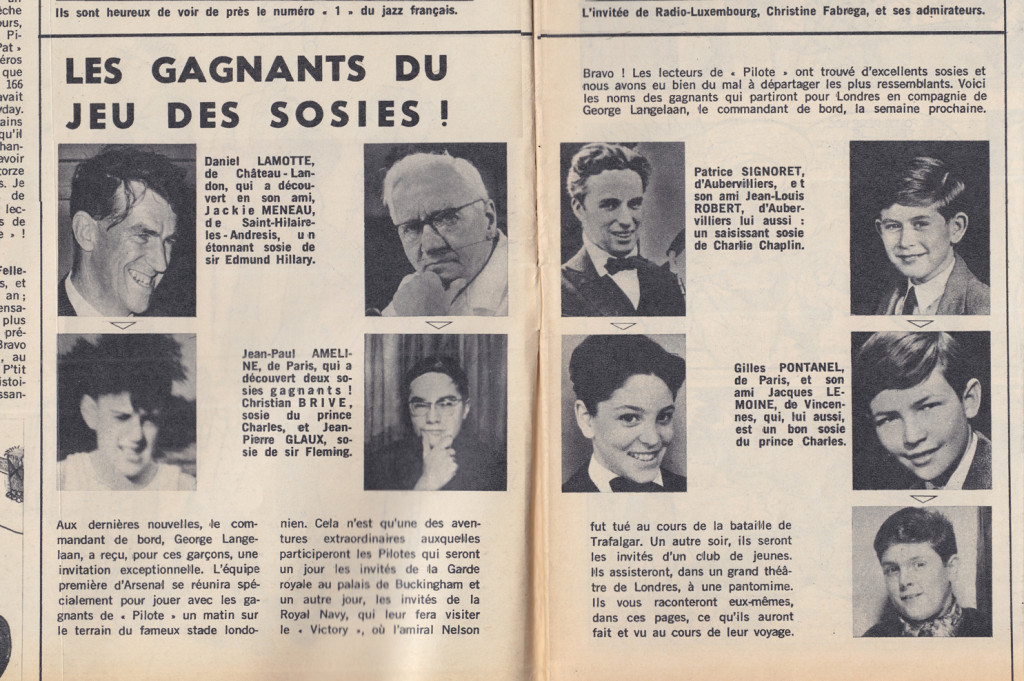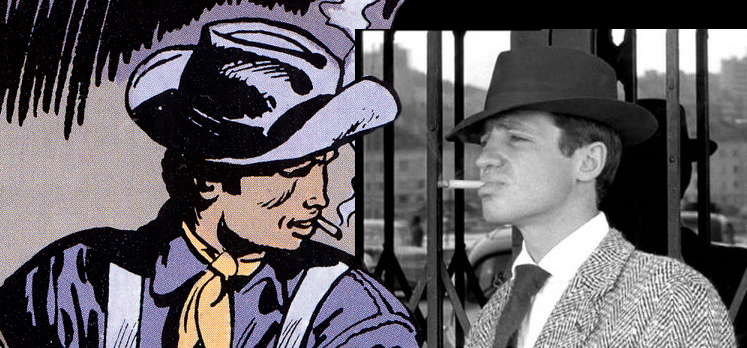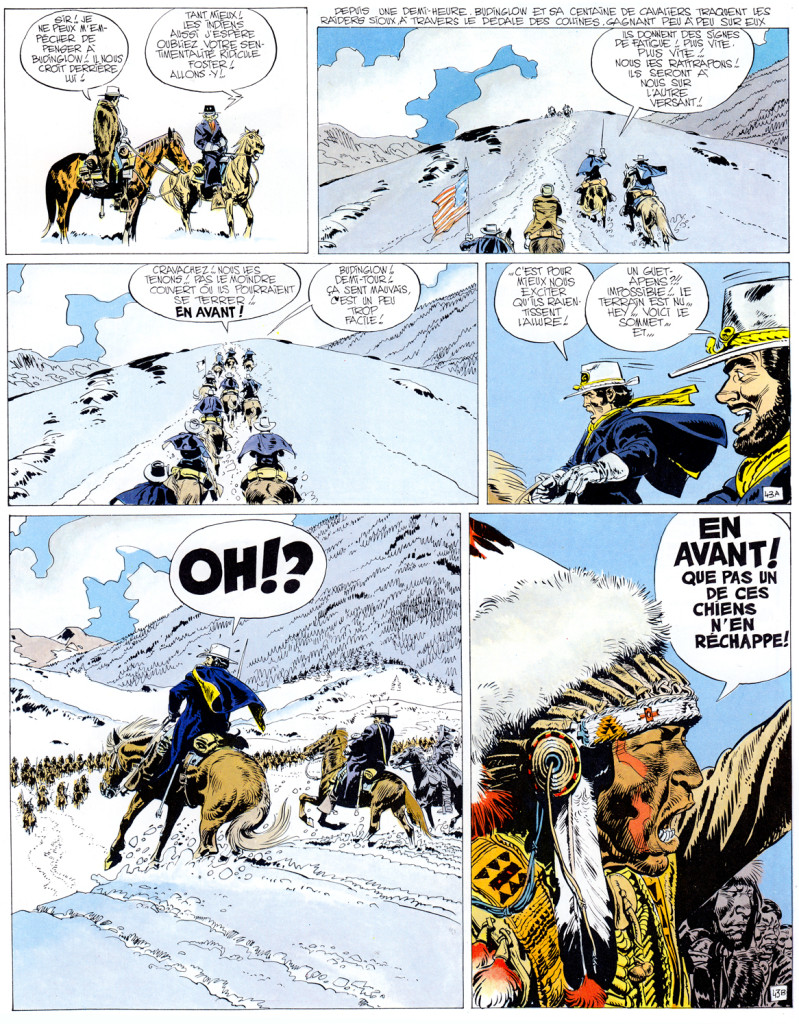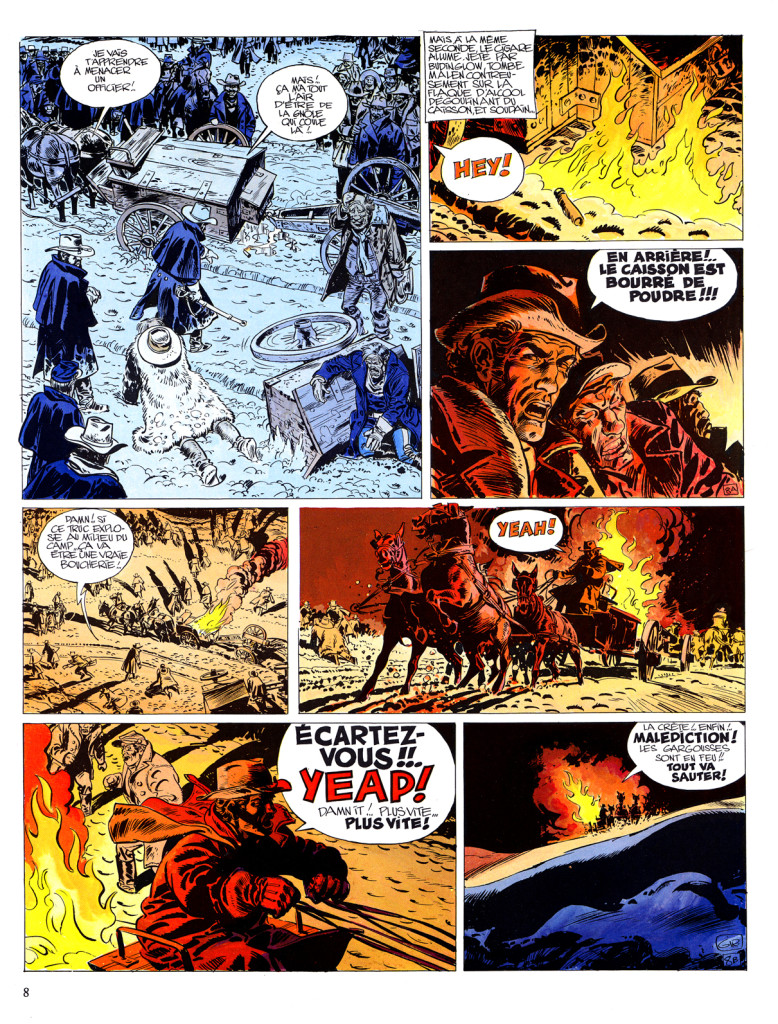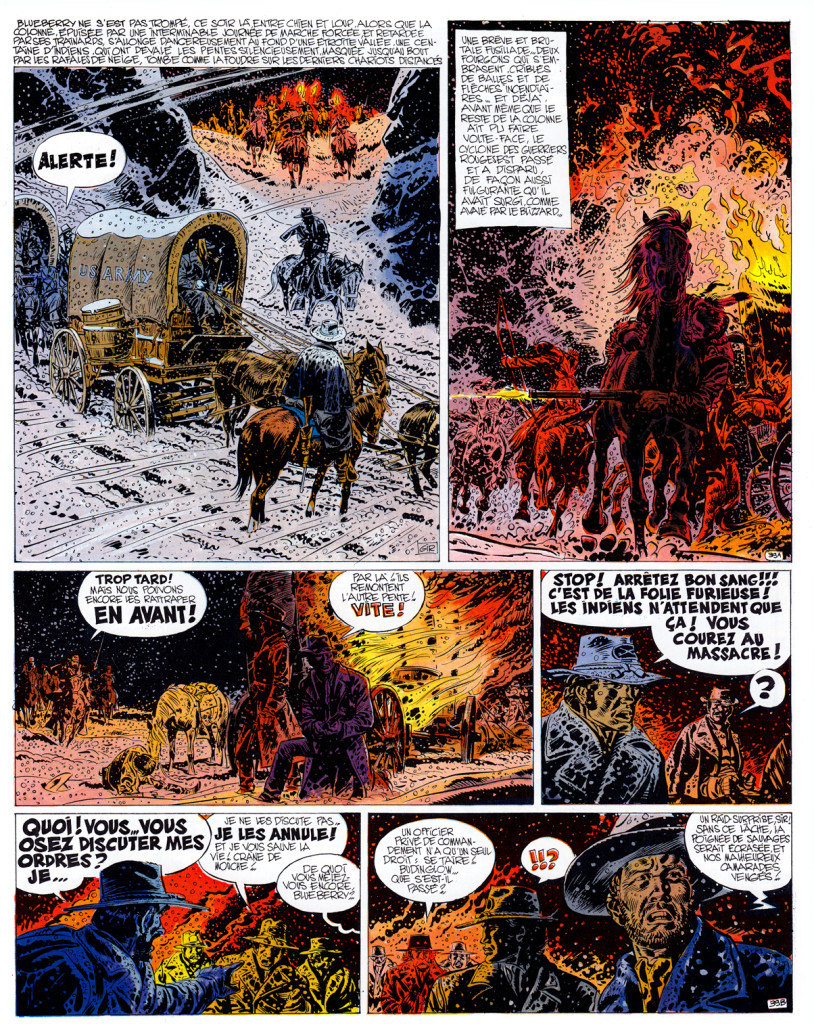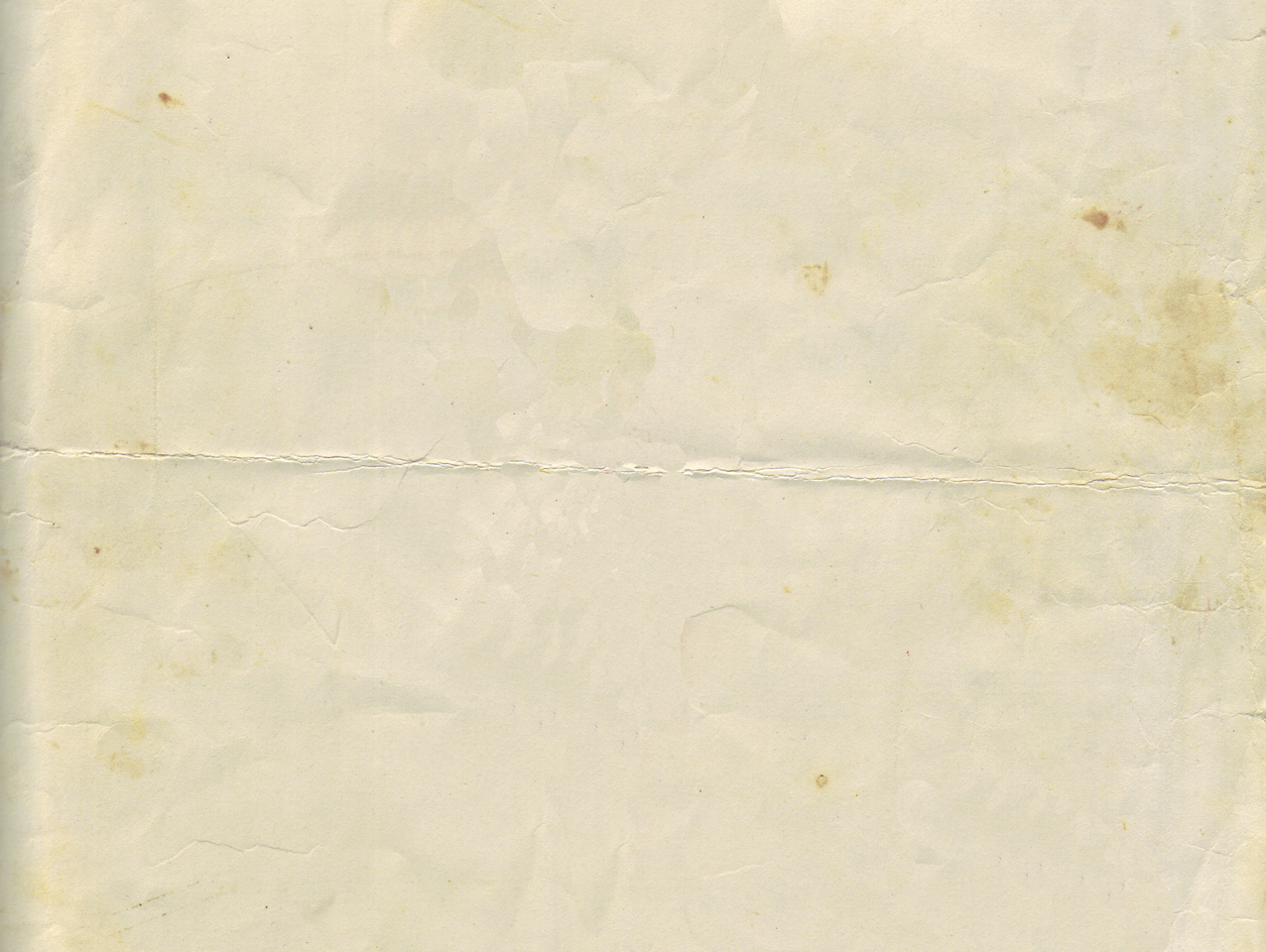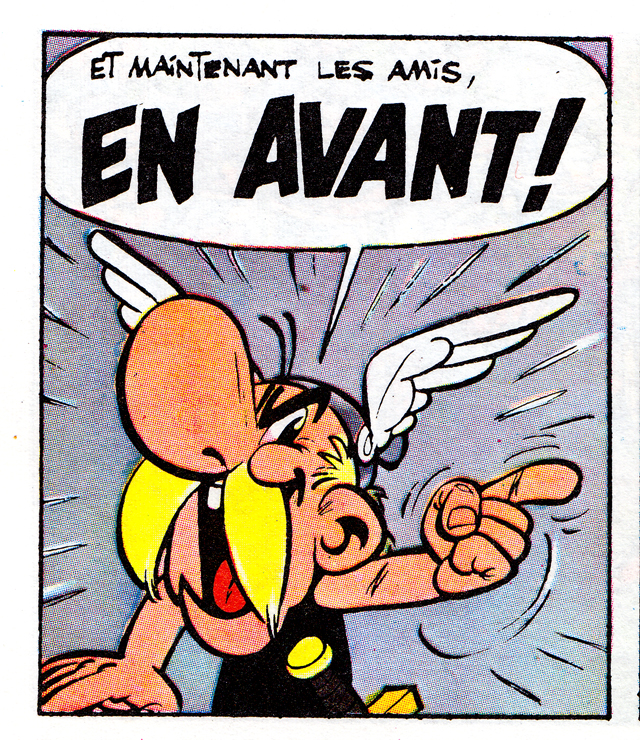 Coming in June from publisher Thames and Hudson, “Comics: A Global History, 1968 to the Present,” written by Alexander Danner and me.   Here are some excerpts and expanded material, including some great images that couldn’t fit in the book.Text in italics is directly from the book.
Coming in June from publisher Thames and Hudson, “Comics: A Global History, 1968 to the Present,” written by Alexander Danner and me.   Here are some excerpts and expanded material, including some great images that couldn’t fit in the book.Text in italics is directly from the book.
The decision to start the book in 1968, to define it as a sort of “comics come of age” narrative, sprung from the idea of “watershed” events like the appearance of Zap in the U.S., of Tsuge’s Nejishiki (Screw Style) in Japan, and, in Europe, and the changes seen in the pages of Pilote all taking place in that same year. In all these cases, of course, the breakthroughs of ’68 had been brewing throughout the earlier years of the decade. Â As it says in the introduction…
 In Europe, the maturing of the comics audience was accompanied by a rebalancing of the creative center from Belgium toward France. This began with the establishment in 1959 of the Paris-based Pilote magazine by writers René Goscinny and Jean-Michel Charlier, and artist Albert Uderzo. Like Tintin or Spirou, Pilote was initially aimed at schoolboy readers and had a distinctly wholesome and pedagogical tone. But Goscinny, who became editor-in-chief, envisioned a more adult tone for bande dessinée, and Pilote began to move in that direction, helped by the popularity of Uderzo and Goscinny’s Astérix le Gaulois (Astérix the Gaul, 1959) and Charlier and Jean Giraud’s Lieutenant Blueberry (1963). Astérix, which was set in France during the period of Roman occupation, offered sly, anachronistic satire of contemporary culture, while Blueberry was a western with revisionist, antiauthoritarian undertones.
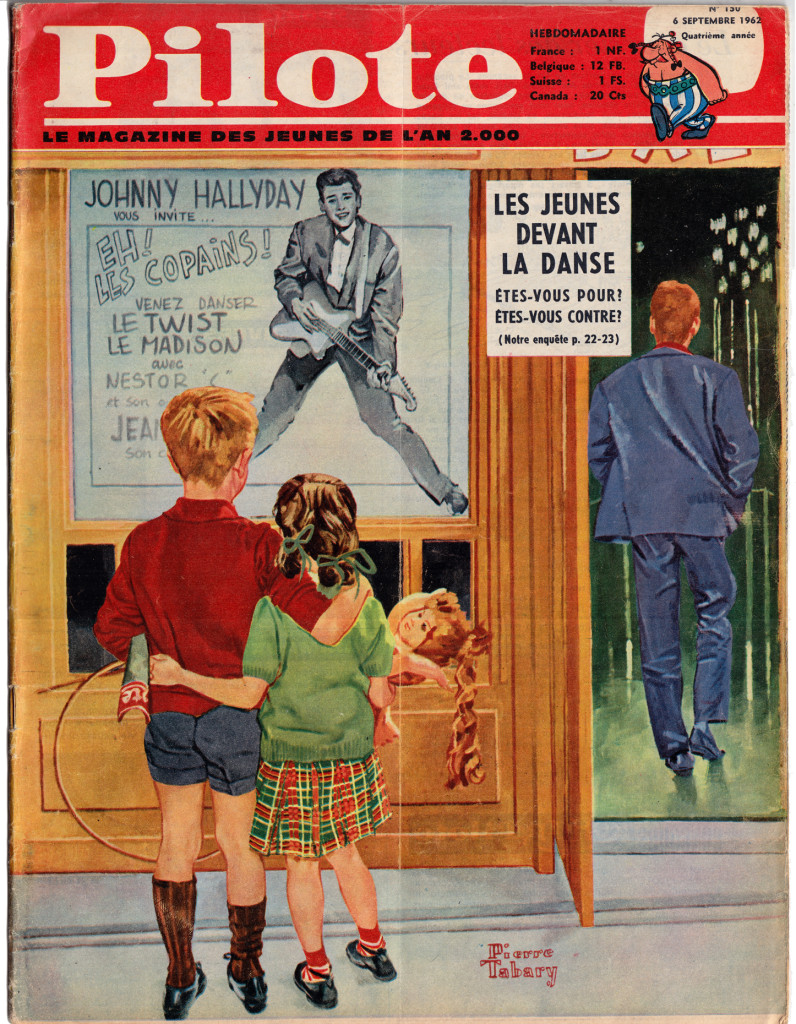
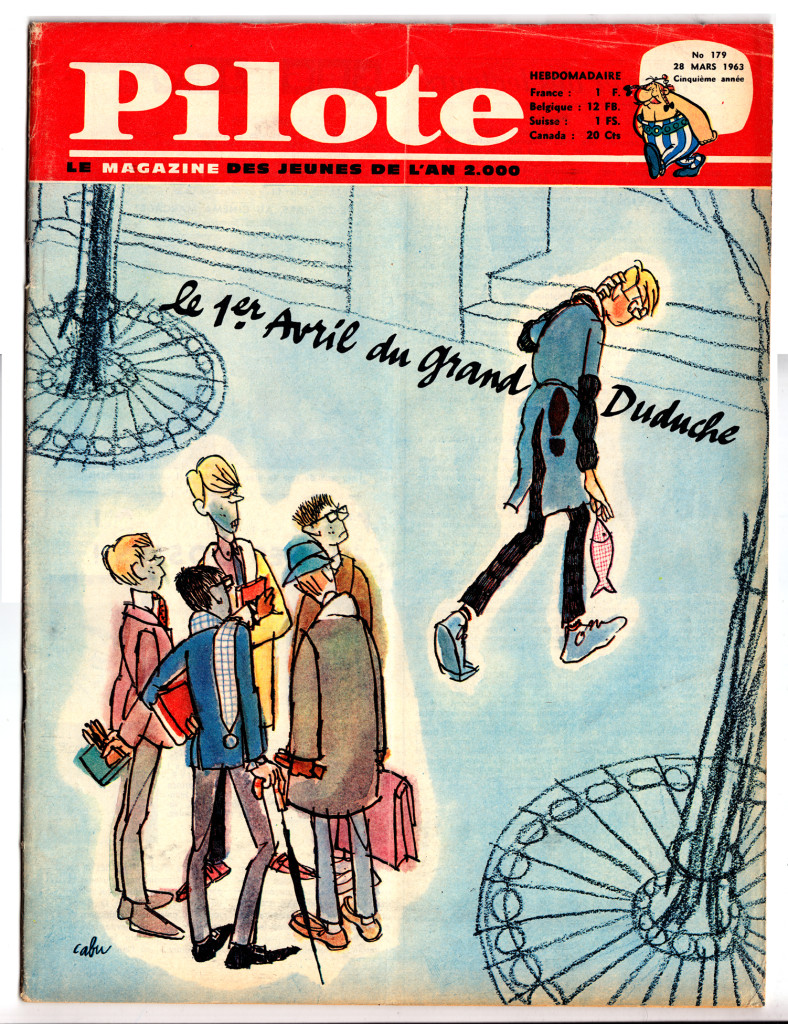
In its first few years, Pilote’s content was only subtly different from that of  Spirou and Tintin.  Though the tone was perhaps a bit breezier, Pilote, like its Belgian elders, featured articles on current events, sports, pop culture and exotic cultures.
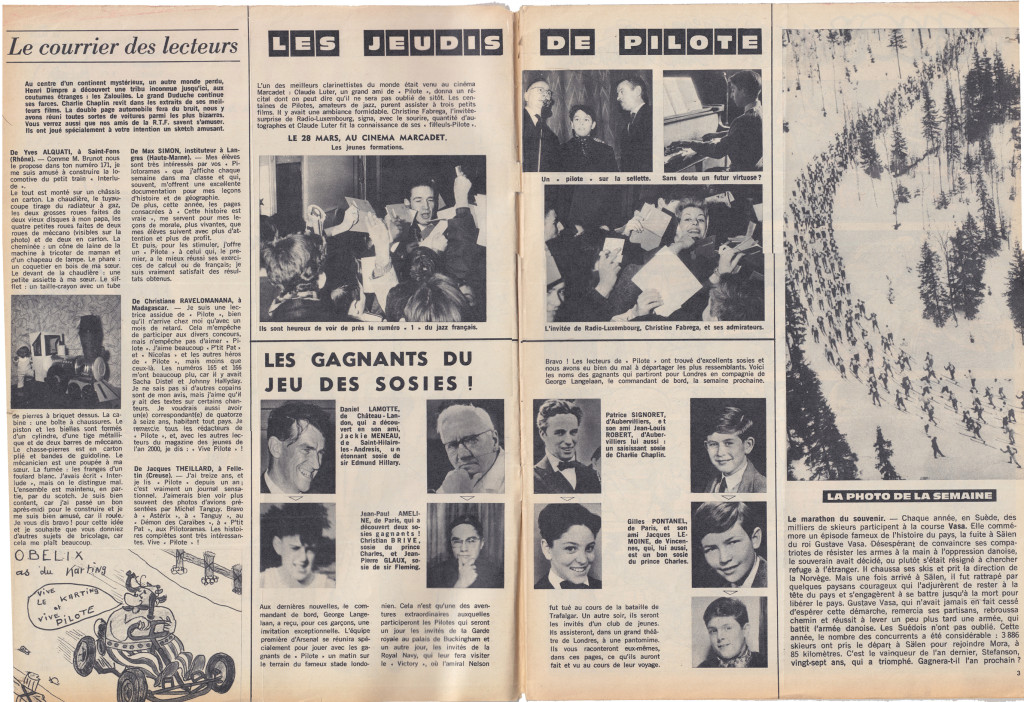
For the most part, the bandes dessinées found in early Pilotes are also in the Spirou/Tintin mold, with a mix of humor and action/drama:
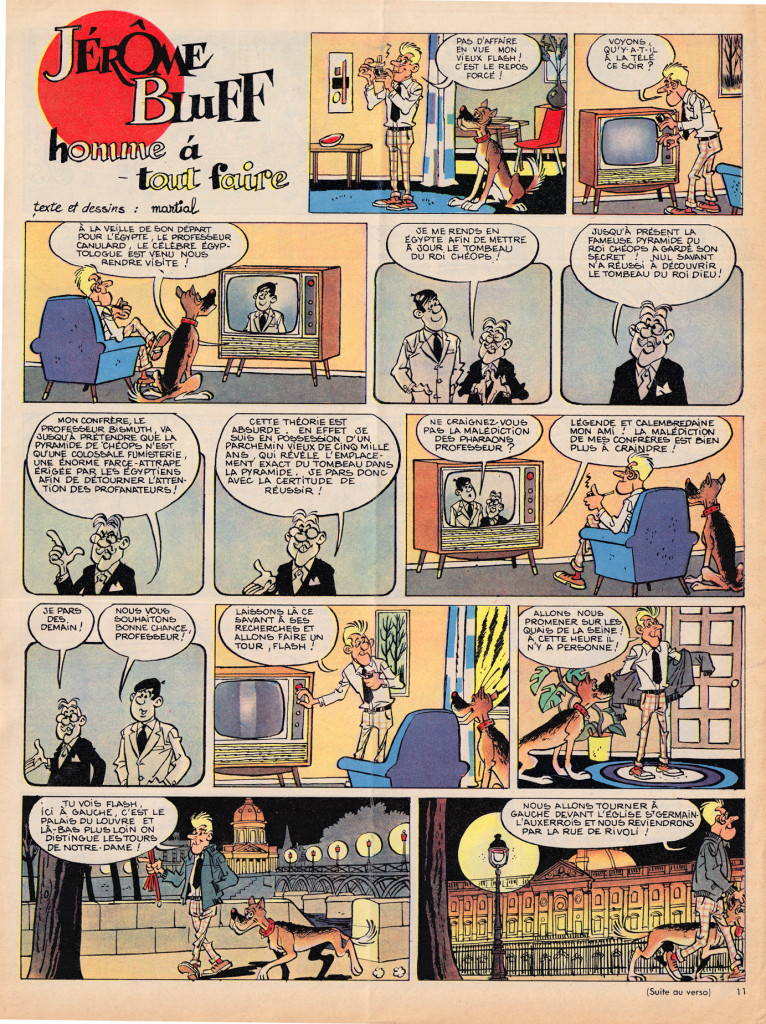
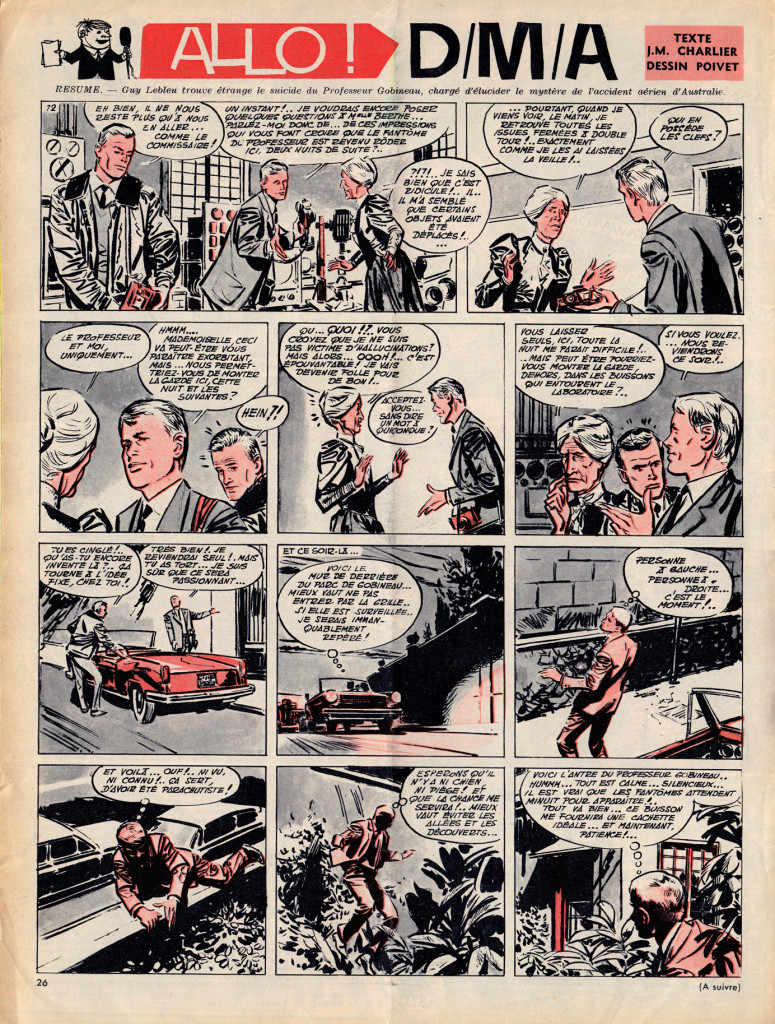
What soon set Pilote apart, and what set it on course to surpass its Belgian rivals, was the strip by founders Goscinny and Uderzo. Â Like any other strip in the journal, Asterix was serialized one page per week:
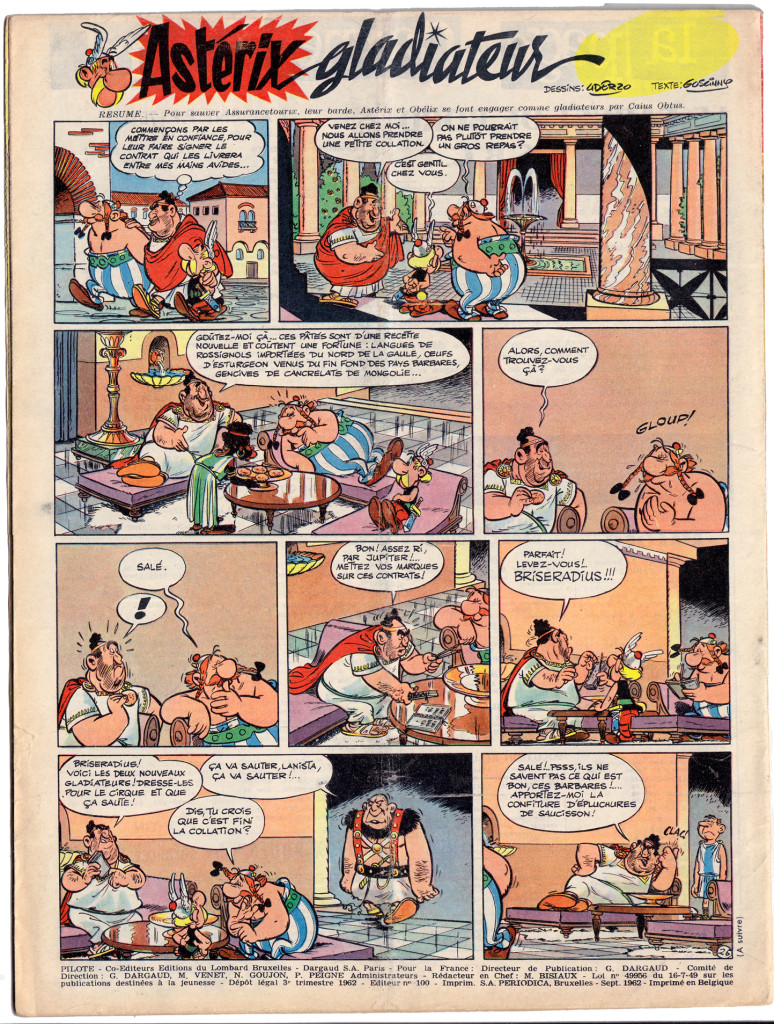
Asterix’ combination of slapstick comedy and anachronistic satire were two of the elements that made it a sensation:
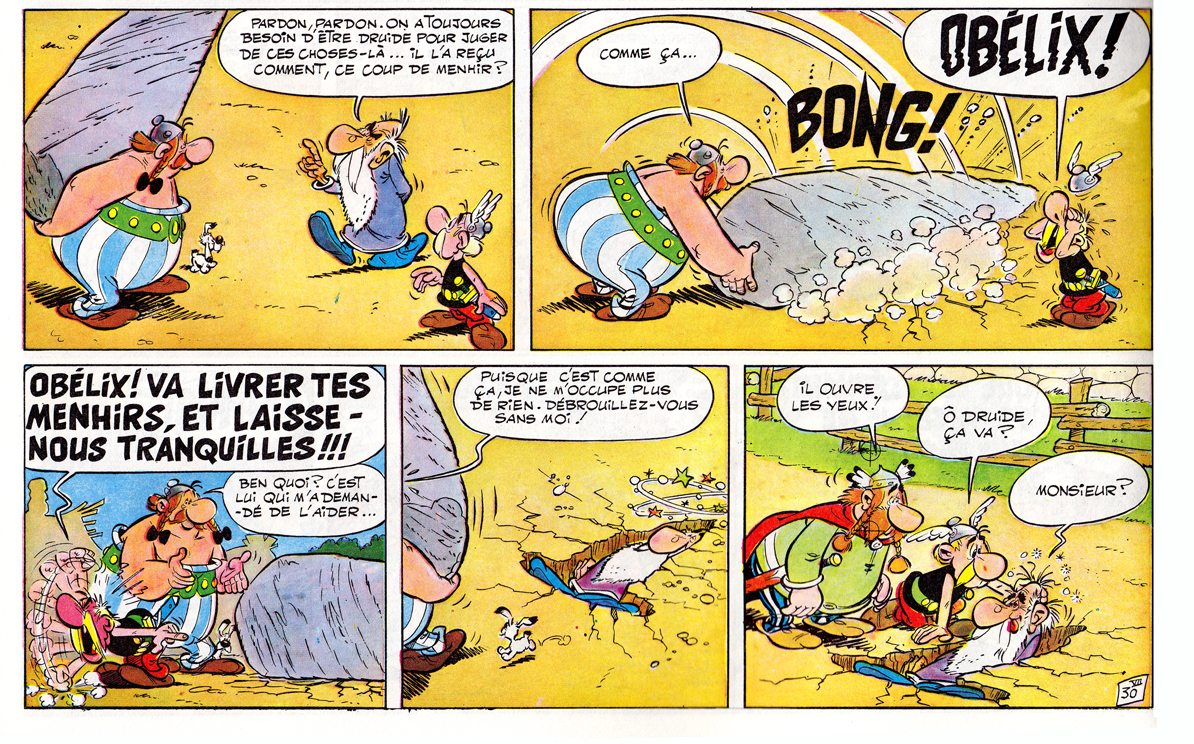
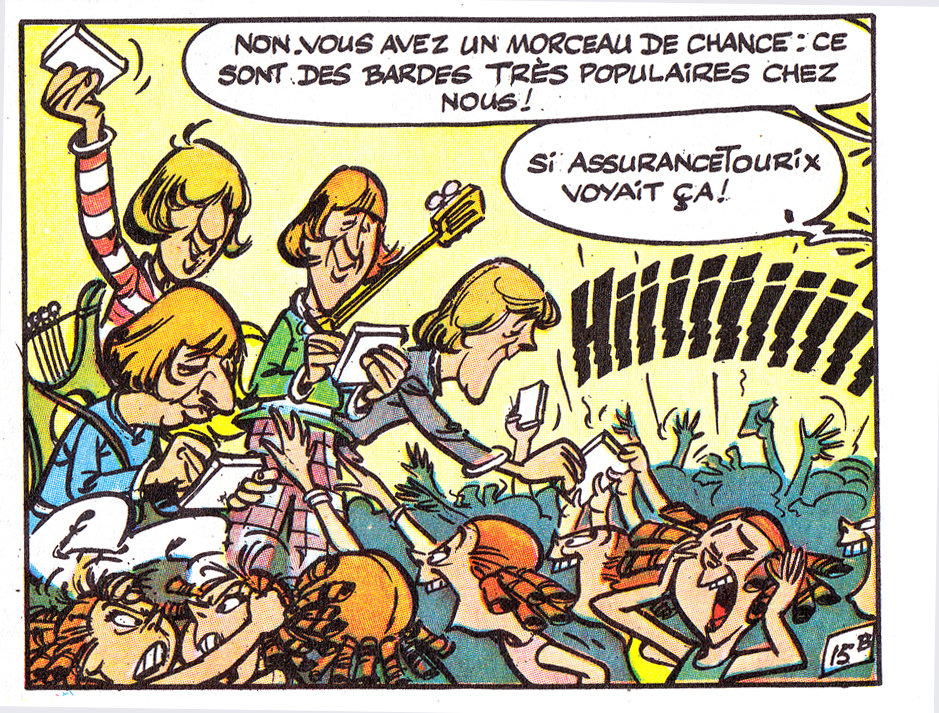
The second pillar of Pilote’s success came in 1965 with Lieutenant Blueberry, written by Charlier and drawn by newcomer Jean Giraud.  In its early years, Giraud’s art for Blueberry was often stiff and undistinguished when compared with other Franco-Belgian westerns:
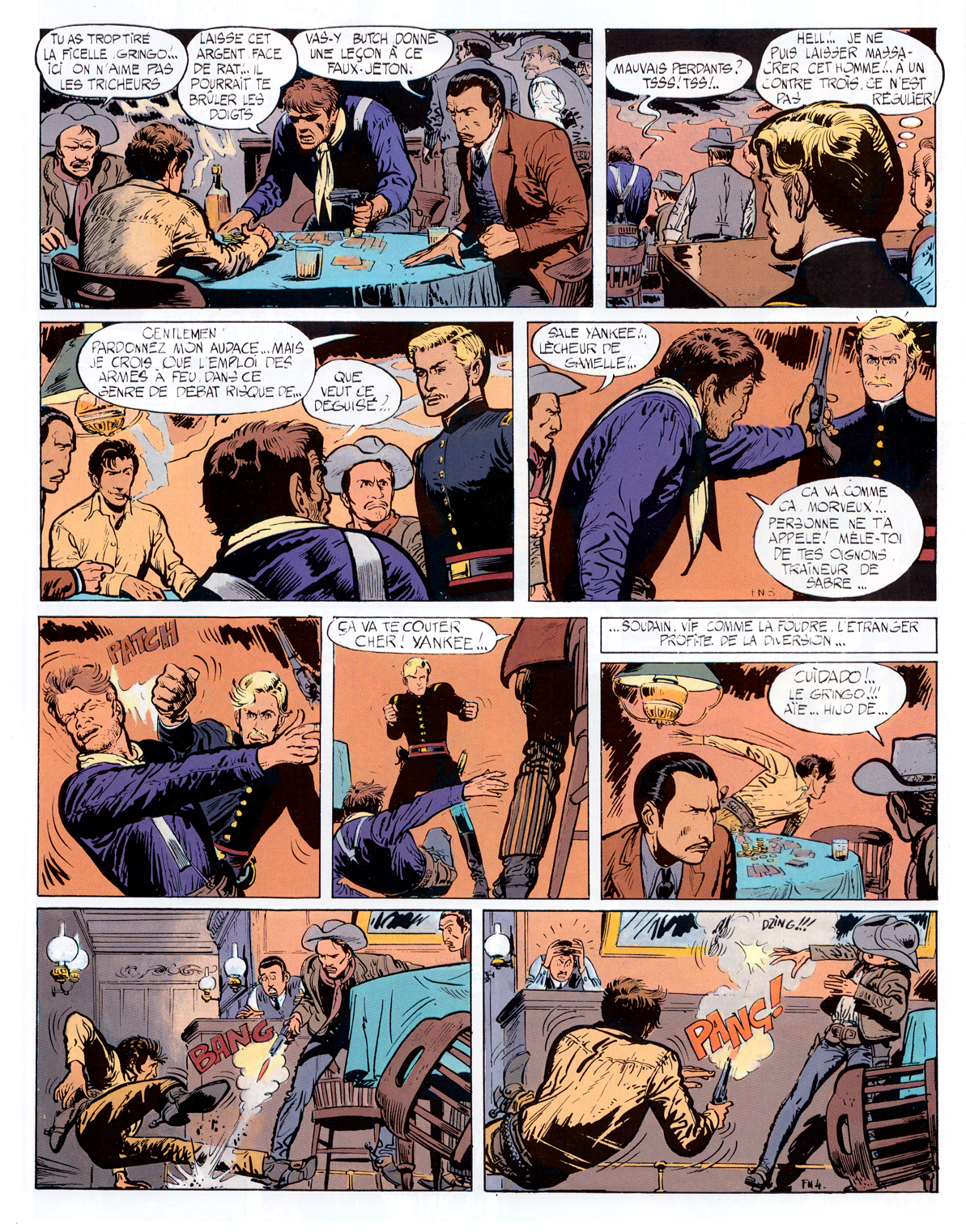
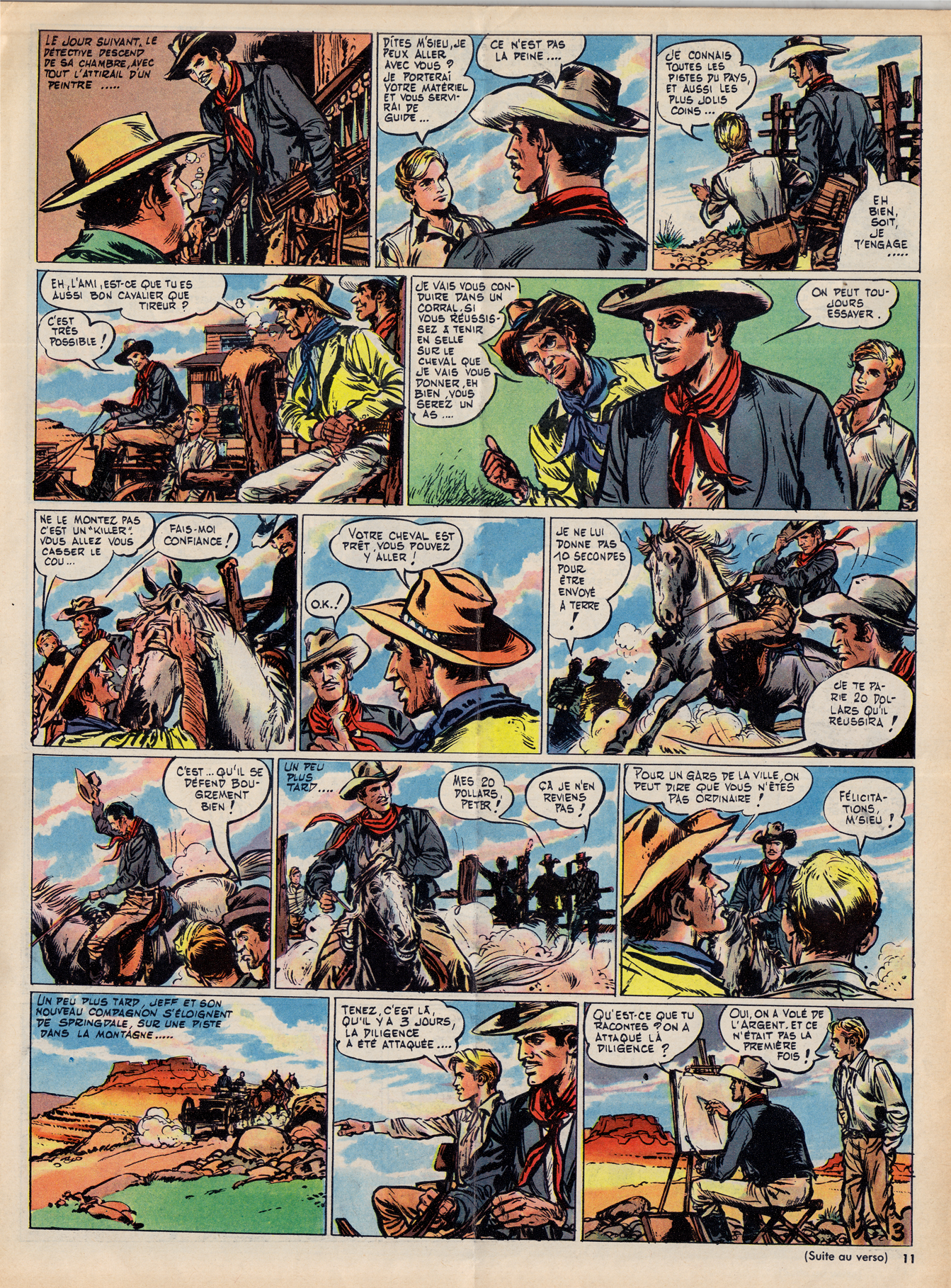
From the start however, Charlier and Giraud brought a refreshing, contemporary rebelliousness to the protagonist of their strip, a quality reinforced by Giraud’s depiction of Blueberry as a sosie for New Wave film star Jean-Paul Belmondo.
Within a few years, though, Giraud’s style would progress astonishingly, just one of the many major developments that Pilote would undergo during the eventful late ’60s-early ’70s period.
(Above: Giraud & Charlier, 3 pages from Le Général Tête Jaune, 1968)
COMING SOON: “Pilote ’68!”
